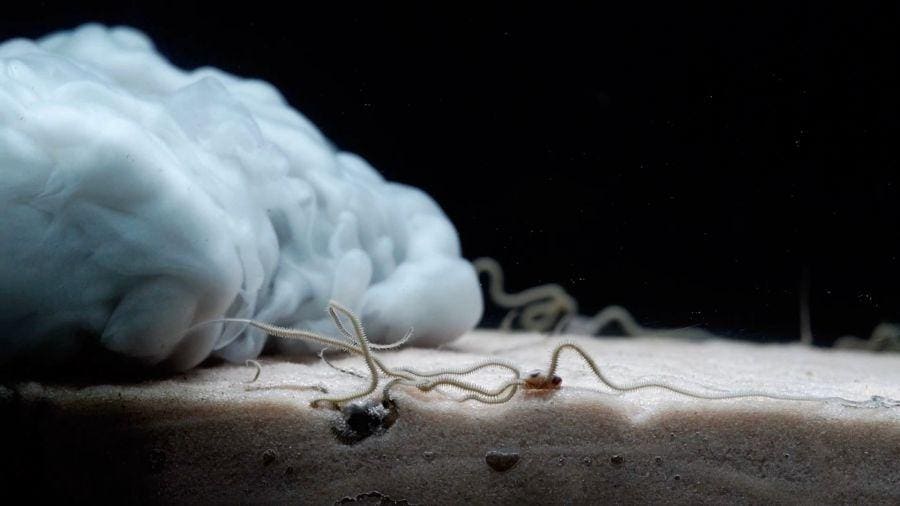A recent study on the preservation of fossils has shed light on the role of burial in keeping organisms intact for millions of years. The process of rapid burial is crucial in preventing scavenging and decay, thus preserving hard elements and soft parts. However, the type of deposition associated with this process is not well understood. To investigate this further, researchers conducted experiments with brittlestars, also known as ophiuroids, which are common marine animals found in the fossil record dating back millions of years.
The study focused on simulating burial under different fast-flowing sediment avalanches, such as turbidites and tempestites. By emptying a bucket of mud, clay, and sandy sediment into an aquarium with living brittlestars, researchers were able to observe how the animals reacted to sudden burial. They found that the specimens were able to escape under a thin layer of sand, using their arms to drag themselves to the surface. However, as the sediment layer increased in thickness, the animals struggled to escape and eventually lost arm tips as they wriggled through the coarse sand grains.
Interestingly, the research showed that bed thickness played a significant role in the rapid burial and preservation of fossils. While layers of mud or clay are often believed to contribute to exceptional preservation by suffocating smaller organisms, the experiment found that many brittlestars remained active enough to escape even with dropping oxygen levels. The study also highlighted the role of freshwater pulses in temporarily stunning saltwater animals, making it difficult for them to successfully escape burial.
The findings of this study provide new insights into the mechanisms of rapid burial and fossil preservation, particularly in marine environments. By understanding how organisms react to different burial scenarios, researchers can better interpret the fossil record and improve our knowledge of ancient life forms. The study, titled “How does rapid burial work? New insights from experiments with echinoderms,” was published in the journal Palaeontology and offers valuable information on the preservation of fossils for future research.
Overall, the research on the burial of brittlestars sheds light on the importance of rapid burial in maintaining the integrity of fossils over time. By simulating different burial scenarios, researchers were able to observe how organisms respond to various sediment avalanches and the role of bed thickness in their preservation. The study emphasizes the need to consider factors beyond grain size, such as oxygen levels and freshwater pulses, in understanding the process of fossilization. These findings contribute to our understanding of how rapid burial works and its implications for the preservation of ancient life forms.
In conclusion, the study on burial experiments with brittlestars provides valuable insights into the mechanisms of rapid burial and fossil preservation. By observing how these marine animals react to different burial conditions, researchers have gained a better understanding of the factors that contribute to the exceptional preservation of fossils. The research highlights the importance of bed thickness, oxygen levels, and freshwater pulses in determining the success of rapid burial and fossilization. These findings contribute to our knowledge of how organisms are preserved in the fossil record and offer new perspectives on the study of ancient life forms.













